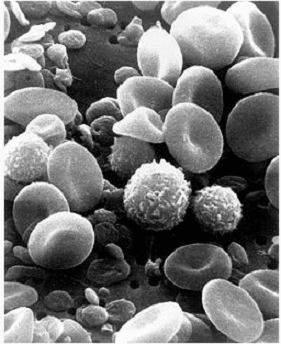University Of Bradford Devises Lymphocyte Genome Sensitivity Test To Detect Cancer
The University of Bradford researchers have come up with a simple blood test that uses ultraviolet waves to diagnose people for cancer. It will be very helpful in detecting all types of cancers and can also aid in investigating the patients having cancer cases that are difficult to diagnose. This diagnostic test named Lymphocyte Genome Sensitivity (LGS) devised by researchers may rule out traditional expensive and invasive methods such as biopsies and colonoscopies.

The test gave precise and accurate results after diagnosing the patients having cancer or pre-cancerous conditions of melanoma, lung cancer and colon cancer by using their blood samples. In LGS test, the main focus is on white blood cells (WBC) which helps to measure the damage caused to their Deoxyribonucleic acid (DNA) when exposed to ultraviolet light (UVA) of varying intensities as UVA negatively impacts the DNA. Based on the damage caused to the DNA, the researchers were able to distinguish between a healthy patient and a patient having cancer or pre-cancerous conditions. In order to conduct their study, researchers analyzed the blood samples of 208 individuals; 94 healthy volunteers were from University of Bradford and 114 individuals were the patients referred to clinics within Bradford Royal Infirmary.
The blood samples collected from the individuals were coded, anonymized, randomized and then finally exposed to the UVA light. After emitting the UVA light through five different depths of agar, the pieces of DNA were moved in an electric field. In the field, the DNA pieces were pulled towards its positive end displaying a comet-like tail. It is inferred from the results that the length of the tail is directly proportional to the damage caused to the DNA. The longer the length, the more damage is caused to the DNA. The measurements of the length of the tail correlated to those having cancer (58 individuals), pre-cancerous conditions (56 individuals) and the remaining 94 healthy volunteers.
To know more about the research you can have a look at the research paper titled #-Link-Snipped-# which was published online in FASEB Journal, the US journal of the Federation of American Societies for Experimental Biology.
Source: #-Link-Snipped-#| Image Credit: White Blood Cell
The test gave precise and accurate results after diagnosing the patients having cancer or pre-cancerous conditions of melanoma, lung cancer and colon cancer by using their blood samples. In LGS test, the main focus is on white blood cells (WBC) which helps to measure the damage caused to their Deoxyribonucleic acid (DNA) when exposed to ultraviolet light (UVA) of varying intensities as UVA negatively impacts the DNA. Based on the damage caused to the DNA, the researchers were able to distinguish between a healthy patient and a patient having cancer or pre-cancerous conditions. In order to conduct their study, researchers analyzed the blood samples of 208 individuals; 94 healthy volunteers were from University of Bradford and 114 individuals were the patients referred to clinics within Bradford Royal Infirmary.
The blood samples collected from the individuals were coded, anonymized, randomized and then finally exposed to the UVA light. After emitting the UVA light through five different depths of agar, the pieces of DNA were moved in an electric field. In the field, the DNA pieces were pulled towards its positive end displaying a comet-like tail. It is inferred from the results that the length of the tail is directly proportional to the damage caused to the DNA. The longer the length, the more damage is caused to the DNA. The measurements of the length of the tail correlated to those having cancer (58 individuals), pre-cancerous conditions (56 individuals) and the remaining 94 healthy volunteers.
To know more about the research you can have a look at the research paper titled #-Link-Snipped-# which was published online in FASEB Journal, the US journal of the Federation of American Societies for Experimental Biology.
Source: #-Link-Snipped-#| Image Credit: White Blood Cell
Replies
You are reading an archived discussion.
Related Posts
hello everyone,
my question is:-
how to deal with the academic gap of more than 1 year during interview.
what to answer when interviewer ask me about what you did...
EDALL Systems is founded by Pritam Ashutosh Sahu. He completed his B.E. in Aeronautical Engineering from Anna University in 2010.
In an exclusive interview with CrazyEngineers, Pritam talks about EDALL...
Microsoft’s personal digital assistant Cortana will finally be making its way to India on the Windows Phone 8.1 Update 1. Joe Belfiore, the corporate vice president and manager for Windows...
Quote:
You may be surprised to hear the applications that are taking advantage of plastic bearings. While metal may still win out in some cases, plastic bearings can be just...
guys suggest me any innovative project competitions that are going to held in tamil nadu on next two months..i want to submit my project in that occation..
